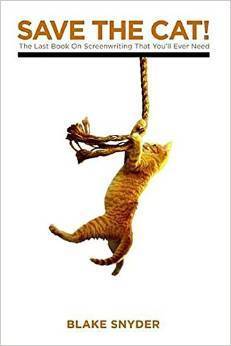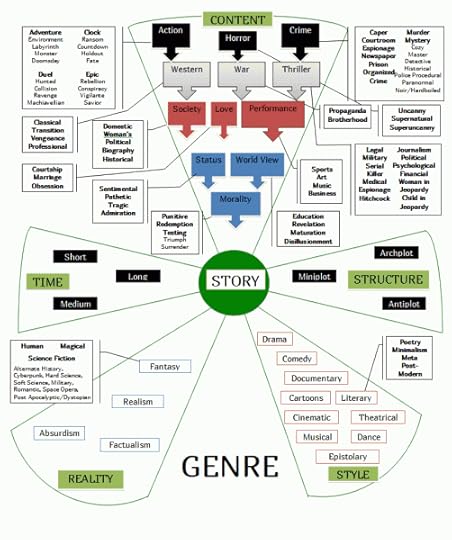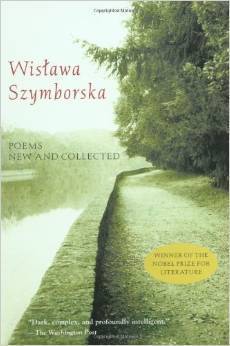Sandra Gulland's Blog, page 11
April 25, 2015
What can you get on Fiverr.com? The good, the bad, and the ugly…
Fiverr is a web site where people offer to do something for $5 — design a logo, perk up a Facebook page, write a song. You name it.
I went on Fiverr looking for someone who could photo manipulate an image I use on this website. I didn’t find anyone for that specific job, but I was amused in passing to discover people offering other tasks, such as traffic biz, who will convert a photo into pop art. I supplied a photo and a caption and … voilá:
Of course then I couldn’t resist asking Triple Eight for a caricature.
(It’s a good thing I have a sense of humour.)
Next, this, from kshatriya, a portrait I might actually use:
All fairly fun for a grand total of $15.
Now this has me thinking of all sorts of mischief I might get into using photos of friends and family. ;-)
(Or, for that matter, portraits of my historical characters.)
I’d love to see what you come up with if you try Fiverr.com.
The post What can you get on Fiverr.com? The good, the bad, and the ugly… appeared first on Sandra Gulland.
What can you find on Fiverr.com? Just about anything.
Fiverr is a web site where people offer to do something for $5 — design a logo, perk up a Facebook page, write a song. You name it.
I went on Fiverr looking for someone who could photo manipulate an image I use on this website. I didn’t find anyone for that specific job, but I was amused in passing to discover people offering other tasks, such as traffic biz, who will convert a photo into pop art. I supplied a photo and a caption and … voilá:
Of course then I couldn’t resist asking Triple Eight for a caricature.
(It’s a good thing I have a sense of humour.)
Next, this, from kshatriya, a portrait I might actually use:
All fairly fun for a grand total of $15.
Now this has me thinking of all sorts of mischief I might get into using photos of friends and family. ;-)
(Or, for that matter, portraits of my historical characters.)
I’d love to see what you come up with if you try Fiverr.com.
The post What can you find on Fiverr.com? Just about anything. appeared first on Sandra Gulland.
April 22, 2015
The clues to a great story
I very much enjoyed film-maker Andrew Stanton‘s TED talk, “The Clues to a Great Story.”
Storytelling is joke telling. It’s knowing your punch line, your ending. It’s knowing that everything you say, from the first sentence to the last, is leading to a singular goal.
probably the greatest story commandment: “Make me care.”
Drama is anticipation mingled with uncertainty.
The 100-words-a-day plan to a great story
I have been writing every morning, in spite of all that is going on in my life right now. I only aim for 100 words. Heck! Who can’t write 100 words?
This simple goal has opened the treasure chest of storytelling. Each day, I write far more than 100 words before stopping (317, 512, 877, 319, 316, 739, 619 … ), but best of all it has me sparking all day and night with ideas. I’m thinking about these scenes all the time.
And it has made me so cheerful! Writing is a type of euphoria.
If you are in writing doldrums, I highly recommend the 100-words-a-day plan. It’s magic. You’ll see.
Please let me know what you think in the comment section below. Ask me anything! I love getting comments.
The post The clues to a great story appeared first on Sandra Gulland.
April 20, 2015
Tools to help figure out what a story needs
My story is missing something, but what? A novel is a complex creature. At some point in the writing process, I find I must closely re-examine the plot in order determine what the story needs.
Editor Shawn Coyne’s The Story Grid method offers excellent tools. (I first wrote about this series here: “The tough nut of revision: on re-examining plot.”)
Seeing your novel on one page will help make story needs clear.
Another basic tool Shawn Coyne offers is the one-page story summary form.
It’s well worthwhile to read his blog series from beginning to end. I’ve highlighted quite a bit. For example:
The crisis is the time when your protagonist must make a decision. And the choice that he makes will determine whether or not he’ll get closer to or further away from his object of desires (both external and internal). Often a particular choice will move a character closer to one object of desire while moving him further away from the other… [Link]
A detailed scene-by-scene spreadsheet helps reveal what’s needed.
A third visual on the Shawn Coyne’s resource page is an example of a more detailed breakdown of story, using Excel.
I’ve evolved the Excel worksheet concept for my own purposes: I’ve cut columns and added others — what a scene reveals, for example, and another for unanswered questions.
I’ve listed scenes down the left, and themes/sub-plots/plots across the top. This makes it easy for me to see if a thread has been dropped and what needs to be picked up.
I haven’t filled out the worksheet for the entire novel — at least not yet — but it has helped me to identify the story needs in the opening scenes, which concerns me the most right now. This process has made me a convert to using Excel for working out a plot.
The post Tools to help figure out what a story needs appeared first on Sandra Gulland.
April 19, 2015
The ABC of SEO in 6 easy steps
SEO stands for Search Engine Optimization, which basically means “How I get my blog post/webpage to show up on Google.” Having a website is essential to a writer, but what’s the point if your website isn’t noticed?
I’ve been writing blogs for a very long time, and reading about Social Media and blogging is something of a hobby, but every time I read about how important SEO was, my eyes glazed over.
My curiosity eventually got the best of me and I waded in. It was ugly. Tech talk, tech talk, and more tech talk. Finally, I broke through. I got it! It’s not hard. In fact, it’s kind of fun.
1. Keywords are the key to effective SEO.
Give some thought to what your keywords will be.
To find keywords that are most often searched for on Google, use Google Adwords.
Type in the keywords you’re thinking of using, and click. A chart will come up showing variations of your keywords, how often they are searched for on Google, and how high the competition is. It’s great if there are a million searches a day for your keywords, but not so great if there are ten million other listings.
A high search number and low competition is ideal. For this post, I decided simply on “SEO,” which has quite a high number of searches (673,000), and only medium competition.
Another useful tool, by the way, is Coschedule Headline Analyzer, because headlines are so important.
2. Use your SEO keywords in the first few sentences of your post.
The closer to the beginning the better.
3. Make headlines in your post that contain your keywords.
Not every headline, of course, but at least one.
4. Put at least one illustration in your post, and use the SEO keywords in the alternative text (“alt text”) description.
This is so that Google will know what the illustration is about.
5. Use your SEO keywords a few more times throughout your post.
But don’t make it look forced. Content is key.
6. Before you press “publish,” make sure that your keywords are in your URL.
And that’s it! Other factors that help a blog post rank on Google—in addition to headlines and illustrations—are good content, links and short paragraphs, but the most important thing is your selection of keywords.
If you use WordPress, I highly recommend the plugin WordPress SEO by Team Yoast. It makes this process very easy.
I hope that this post didn’t make your eyes glaze over! Please leave a comment if this helped you, or if you have a tip to share.
The post The ABC of SEO in 6 easy steps appeared first on Sandra Gulland.
April 16, 2015
Sorting your literary archives (otherwise known as paper clutter)
At nine this morning there were 13 people in our house, all talking and going about their business. Many of them had showed up at 8:00. We’re having our house painted, some people were here to scope out photo ops (for what, I don’t know), etc. etc. etc.
It’s a chaotic time of year at the best of times. In two weeks we fly back to Canada. Wrapping up a half-year of work and books and notes and stuff always sends me into a spin, but this year it is intensified because we’ve put our house in San Miguel de Allende, Mexico, up for sale, and are building (and designing) a new one here.
Upheaval!
We have been living half-the-year in Mexico for close to twenty years. Because we will be moving, I’ve been pruning my selves and closets. Long overdue, true, but it’s harder for a writer of historical fiction, I suspect, and especially for one (like me) who doesn’t throw anything away. In the last week I’ve sent off five or six big boxes of give-aways of out-dated computer equipment and books I know I will no longer need.
Worse, I have stacks of edited drafts in my office lock-up.
As in stacks!
Clutter—or literary archives?
Long ago, in a Margaret Atwood workshop, she told the class: “Don’t throw anything away.” (Dangerous words to tell a hoarder.)
I recently told my good friend Merilyn Simonds that I was going to have to throw out the papers filling up my lock-up and she exclaimed, “Don’t!”
Both Merilyn Simonds and Margaret Atwood are archived. Their papers are picked up every year—sweet!—to be put into their literary archives, lodged in a university library. This is something I have long intended to look into (more on this later, I promise), but for the time being—and perhaps forever—my “literary archives” are basically clutter in the basement of our house in Canada and in my storage lock-up in Mexico.
Sorting and labelling the papers this morning so that at least they can be easily moved to the next lock-up made three things clear about my writing process.
One: I write lots of drafts.
Two: I print out lots of drafts.
Three: I am messy as all get out. (Don’t you love that old expression?)
Do I even want this known? A good question!
Two things I learned, and which I recommend for your literary archives
1) I am very glad that I include the draft number in the footer of each draft. Here is the format I am using now:
Gulland, The Game of Hope, draft 5.5, started April 1, 2015
2) I regret that I haven’t dated the editorial notes I receive, or noted who wrote them. (Of course I thought it was obvious at the time.)
I was amused to see this title page on draft 9.6 of what is now The Shadow Queen:
The title of that novel went through so many evolutions!
Figuring out how to begin writing again
Mixed in with all this is the ongoing frustration of trying to figure out how to proceed with my ever-so-challenging draft 5.4 (i.e. the 4th draft of the 5th draft) of The Game of Hope.
There are many new chapters, new scenes required—intimidating!—and I decided that since life is chaotic, the solution might be to tackle writing in a chaotic way: I will simply write snippets of dialogue and scenes as they come to me, and piece them together later.
Writing new material is always a bit like inching into a pool of very cold water, and because there is so very much to do in this coming-and-going transition period, I have set myself a simple goal: 100 words a day. Once that’s going, I will inch it up.
Update: 316 words today! This is what happens when you set a 100-word-a-day goal. :-)
April 8, 2015
The tough nut of revision: on re-examining plot
I begin a novel by writing a plot. This doesn’t mean listing actions, but tracing the characters emotional arcs as well. The two are intertwined.
I don’t go into detail: I simply describe a scene in a sentence or two. Even so, it comes to 40 pages, and I take it through several drafts.
Save the Cat: a great book on plot
I basically use the guidelines Blake Snyder sets out in Save the Cat: they are simple and straightforward.
I’ve condensed them into a “Beat Sheet Guide” for my own use (click to download), but I highly recommend reading the book. Snyder is funny and to-the-point.
I write the first draft quickly, more or less following the scene-by-scene outline I’ve laid out according to these “beats.”
However, somewhere between the first draft and the last (ninth? tenth?), I find I need to regroup. That is: I need to have another look at the structure of the novel—the bones of it.
The (dreaded) middle of the writing process
This is where I am now, struggling to find firm ground in the “swamp” of the fifth draft of my current WIP, The Game of Hope, working title of the first of my Young Adult novels about Hortense.
Many things change in the process of writing. Themes emerge, characters step into the foreground and other characters prove to be ineffectual and need to be cut. New scenes are required, entire chapters.
It’s a confusing stage of the writing process: taking a novel apart and trying to put it back together again. It’s easy to get lost. For me, this is when I begin to lose faith—in myself as a writer, and in the novel. This is when I lose heart.
This is also when I become a magnet for solution.
A few weeks back I happened upon Shawn Coyne’s blog series: The Story Grid. (Soon to come to a bookstore near you.) I’ve been gobbling up the blog posts and making notes. Here are some “plot” visuals from the Resources page of this website.
This first visual is on genre: what genre is your story? (The visual is a bit hard to understand unless you’ve read what he’s had to say.)
One of the most interesting aspect of Coyne’s analysis, for me, is breaking story structure down into three types: archplot (the standard), miniplot (mostly literary), and antiplot (experimental).
Having been a fan of Joseph Campbell’s Hero with a Thousand Faces since I was 16 — a very long time ago — , I assumed that archplot was really the only structure. But try to analyze an Alice Monroe story in this way! It simply doesn’t work. Her stories follow Coyne’s miniplot model. This makes sense.
Too, I’ve sometimes wondered if the archplot “quest” story model wasn’t basically male, wondered if there was a female alternative. (A thought to tuck away for future pondering.)
I’ve an important thing to decide about the novel I’m writing: What genre is it? It’s a coming-0f-age novel, true, but it’s also a romance. As such, it’s missing some key scenes — which helps explain what my editors have been saying.
I’ll be writing more on The Story Grid in follow-up posts, but for now, it’s time to crawl back into that swamp (the WIP).
The post The tough nut of revision: on re-examining plot appeared first on Sandra Gulland.
April 7, 2015
All hail The Shadow Queen!
Today, in Canada, a simply gorgeous paperback edition of The Shadow Queen is out!
Frankly, it’s hard to settle down to work. It’s tough being so far away (we’re in Mexico still). I’ve yet to even get my hands on it.
Procrastination #1: I up-dated my paintings page.
The post All hail The Shadow Queen! appeared first on Sandra Gulland.
April 6, 2015
An author newsletter is key to effective book promotion

The importance of the author newsletter
In my decades as a published author, I’ve learned a few things about the author newsletter.
First: it is the single most important thing you can do to reach out to your readers. Experts on book marketing say that an author’s newsletter is more effective than any amount of social media (although social media certainly helps).
Fortunately, sending out a newsletter is also one of the easiest things an author can do.
Research by subscribing to author newsletters
Subscribe to author newsletters in order to learn about all the various styles. In this way you will see what engages interest — and what does not.
You can see my latest newsletter here. (Of course, I wouldn’t be professional if I didn’t point out that you can sign up for it here.)
Sign up for an email newsletter service
Decades ago, I started out with a simple email sent to family and friends. I quickly learned that there was a limit to how many emails my computer mail program was willing to handle.
That’s when I discovered the need for an email service. (I use GroovySoup, but many authors use MailChimp.) For a reasonable fee, an email service will provide you with a newsletter template, maintain your email database, and give you statistics (how many opened your newsletter, for example, and which links were the most popular).
You can have a standard template customized. I have the header of my newsletter reflect my website:
Feed your email newsletter database
Most everything you do as a writer should be with an eye to gathering email addresses to add to your newsletter mailing database. If you give a reading: pass around a newsletter sign-up form. On your website and blog, be sure to have a sign-up link. This database is gold: these are your core followers.
Offer value
Some author newsletters are formal. Mine is more chatty. I like to imagine that I’m writing to my closest friends and family, so that the tone of my newsletter is close and familiar. Decide what tone is best for you.
I feel it’s important to give nuggets of news: the newsletter shouldn’t be too long, and it should be easy to skim. The headlines, too, should attract interest.
Write about a variety of things: your research, your work, your travels — your news — but also include things that will be of interest to your readers: books you’ve enjoyed reading or a writing tip, for example.
Give things away. With each of my newsletters, a subscriber wins a copy of one of my books.
I revise my newsletter several times over, and before I send it out I have a few people read it and make suggestions. Because it is hard to see one’s own mistakes, I have an editor look at it for errors. This is money well spent.
Use visuals
There should always be visuals in a newsletter. I use Google image search and my own photos. Be sure that the images you use are in the public domain. Wikipedia images are available for use, as a rule. Canva is a site for creating your own custom designs.
Give thought to the subject header
The subject header in your newsletter is very important. Imagine all the email people get. The subject header is what will make someone decide whether or not to open your newsletter. Make it interesting.
How often should you send out a newsletter?
Some authors send out a newsletter once a week, others once a month. I aim to have a newsletter out every three months. I think once a month is considered the most effective.
Do you send out an author newsletter? If so, please link to it in the comment section below. I’d love to see it. What has worked best for you?
The post An author newsletter is key to effective book promotion appeared first on Sandra Gulland.
March 22, 2015
“Zeroes on the loose”: a Sunday morning listening to a beautiful poem beautifully read
This is a beautiful poem by Polish poet Wislawa Szymborska to begin a Sunday morning, read by Amanda Palmer:
POSSIBILITIES
I prefer movies.
I prefer cats.
I prefer the oaks along the Warta.
I prefer Dickens to Dostoyevsky.
I prefer myself liking people
to myself loving mankind.
I prefer keeping a needle and thread on hand, just in case.
I prefer the color green.
I prefer not to maintain
that reason is to blame for everything.
I prefer exceptions.
I prefer to leave early.
I prefer talking to doctors about something else.
I prefer the old fine-lined illustrations.
I prefer the absurdity of writing poems
to the absurdity of not writing poems.
I prefer, where love’s concerned, nonspecific anniversaries
that can be celebrated every day.
I prefer moralists
who promise me nothing.
I prefer cunning kindness to the over-trustful kind.
I prefer the earth in civvies.
I prefer conquered to conquering countries.
I prefer having some reservations.
I prefer the hell of chaos to the hell of order.
I prefer Grimms’ fairy tales to the newspapers’ front pages.
I prefer leaves without flowers to flowers without leaves.
I prefer dogs with uncropped tails.
I prefer light eyes, since mine are dark.
I prefer desk drawers.
I prefer many things that I haven’t mentioned here
to many things I’ve also left unsaid.
I prefer zeroes on the loose
to those lined up behind a cipher.
I prefer the time of insects to the time of stars.
I prefer to knock on wood.
I prefer not to ask how much longer and when.
I prefer keeping in mind even the possibility
that existence has its own reason for being.
Bravos to both Maria Popova of Brain Pickings, and singer and creative force Amanda Palmer for making this possible, not to mention the poet herself, Wislawa Szymborska.
“I prefer zeroes on the loose.”
“Possibilities” is in Poems New and Collected by Wislawa Szymborska.
I just bought a copy, and I bet you will too. ;-)



















